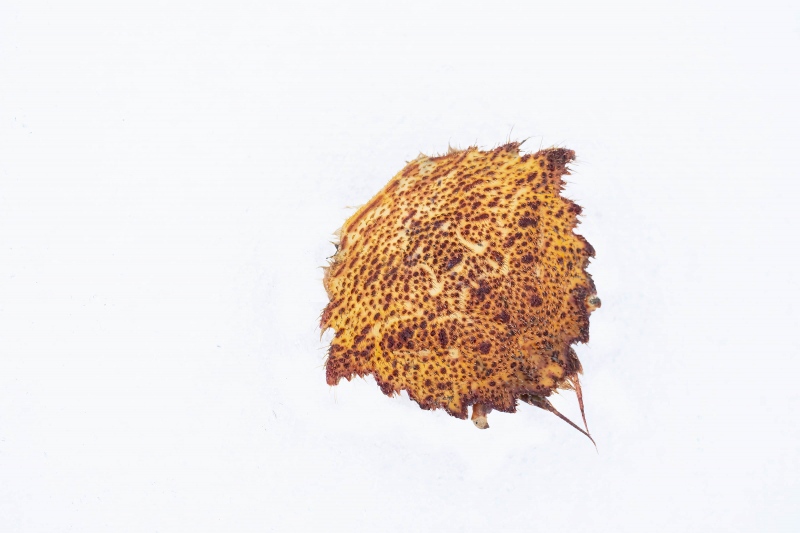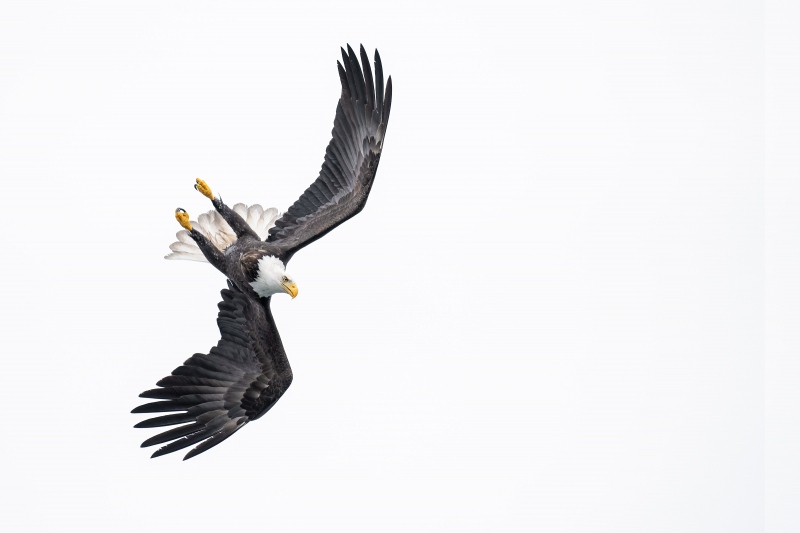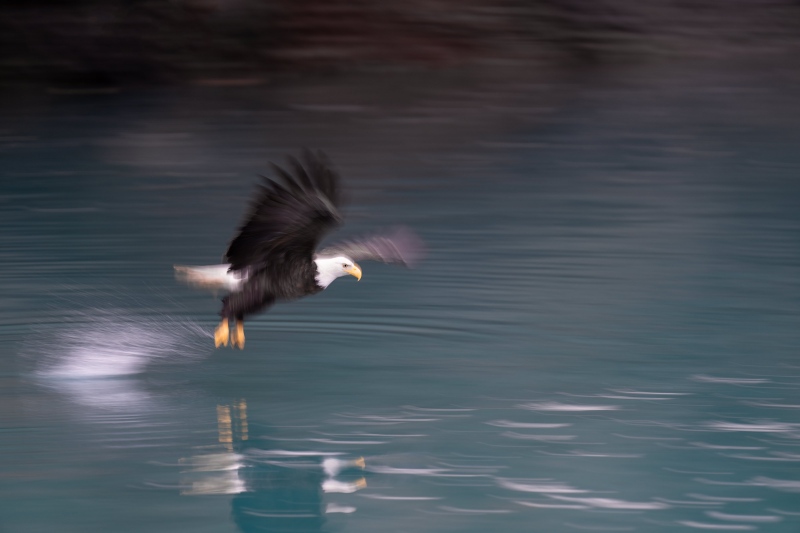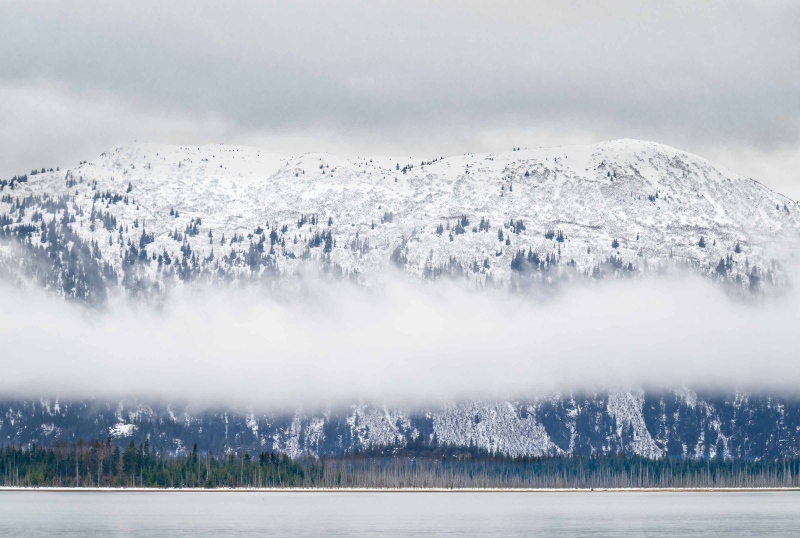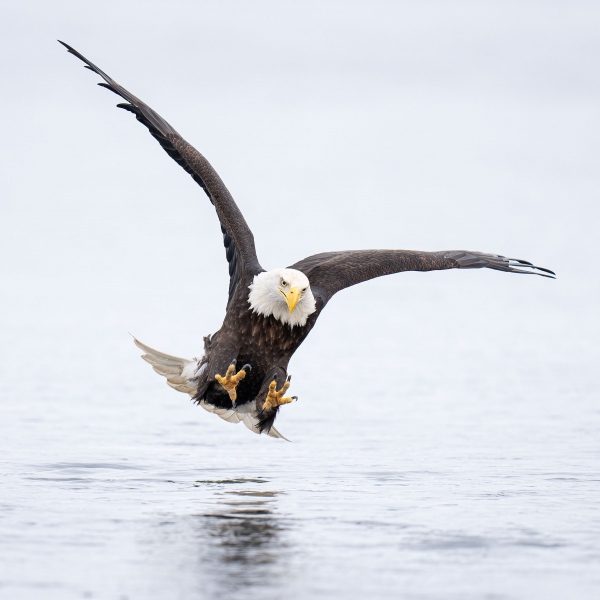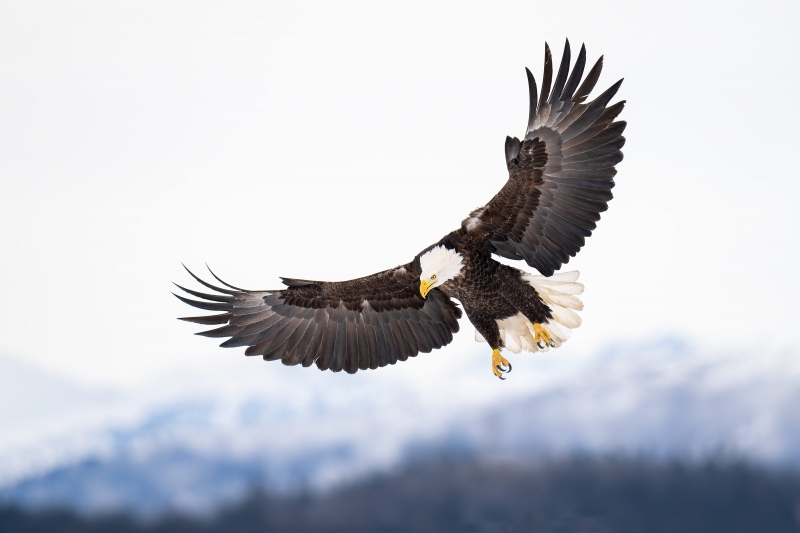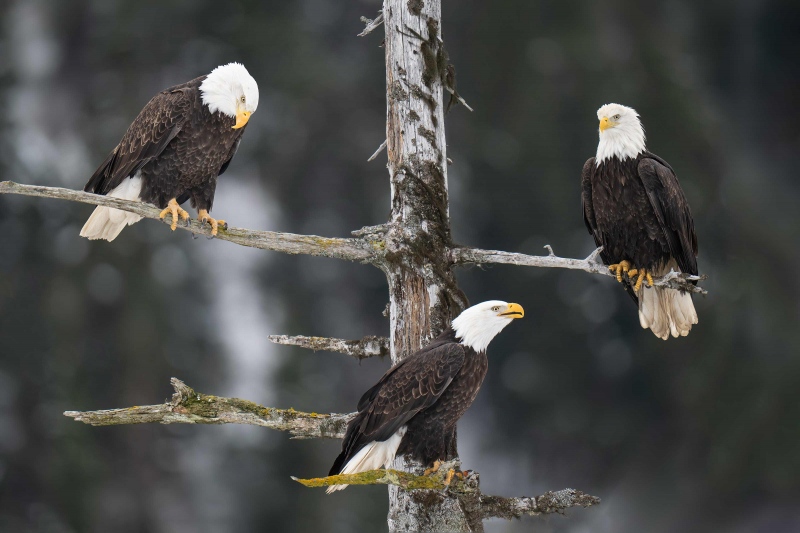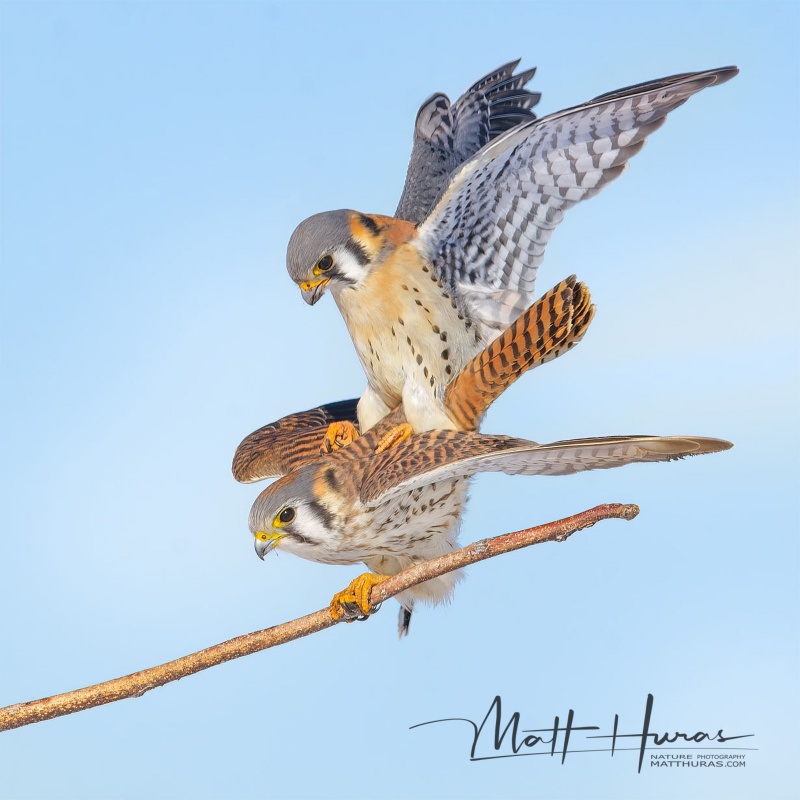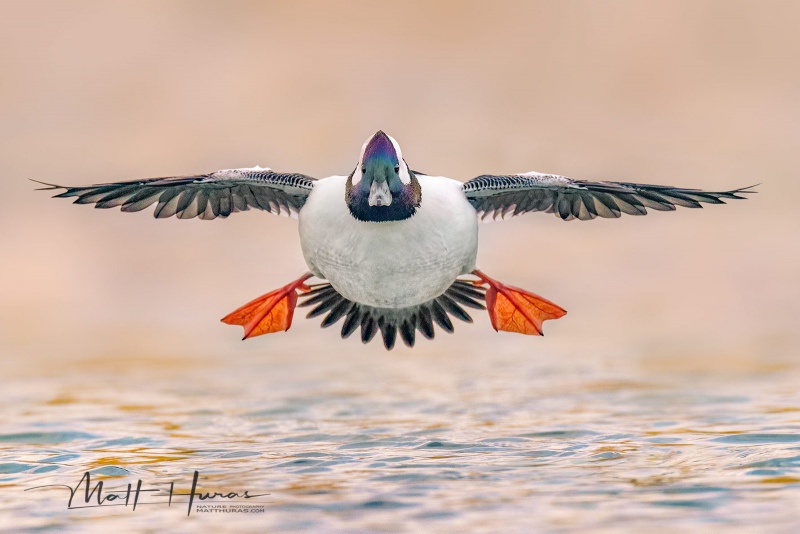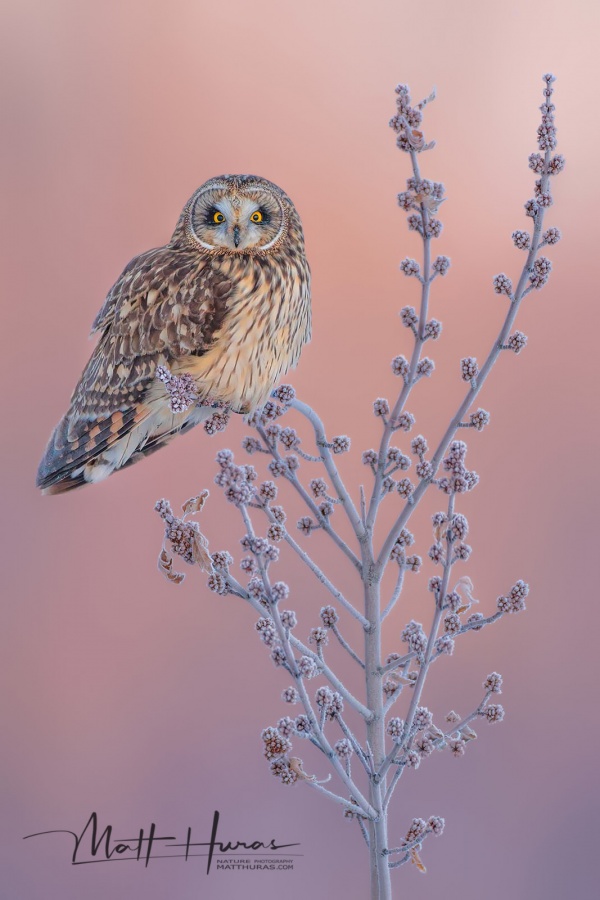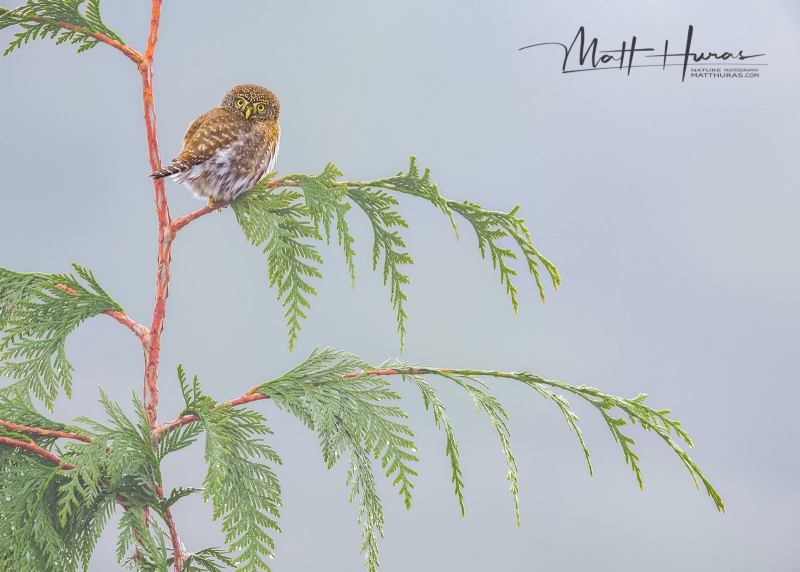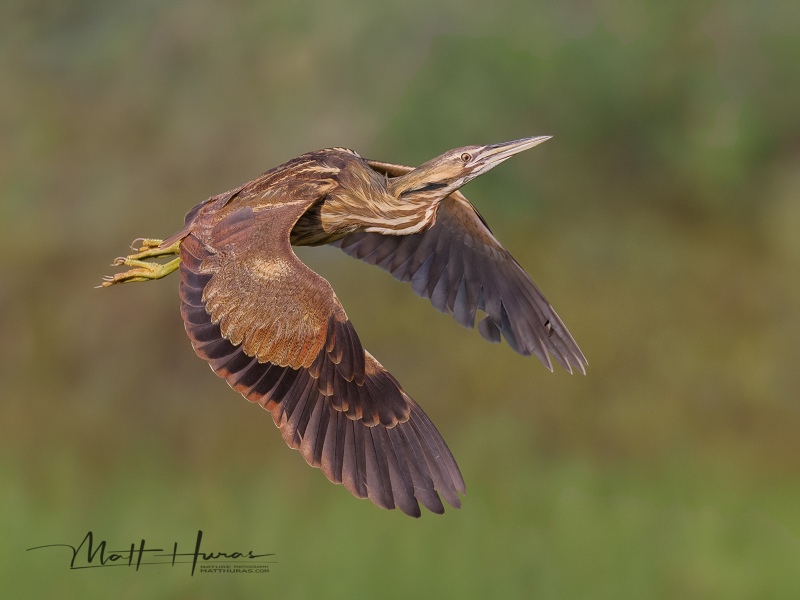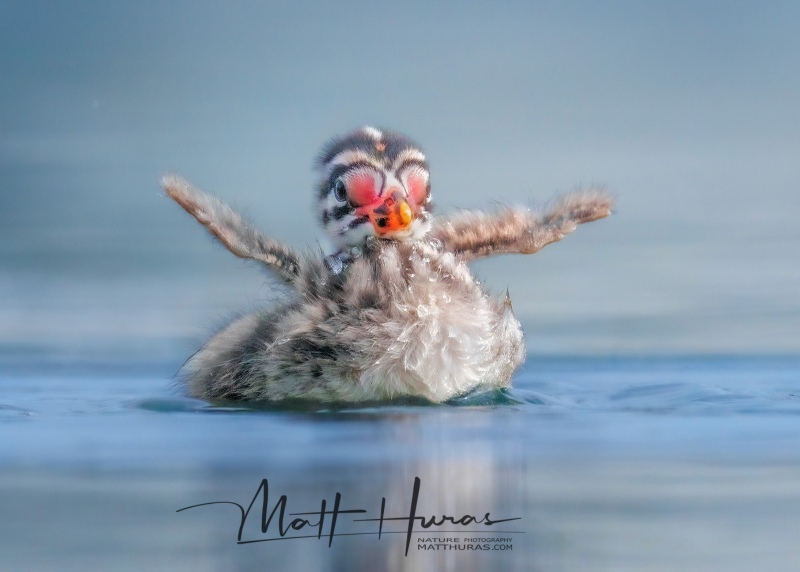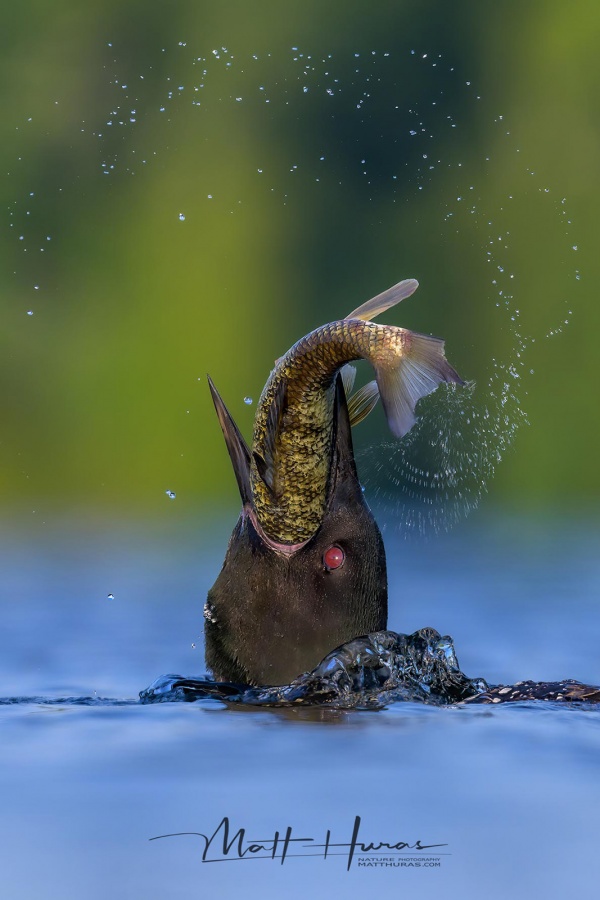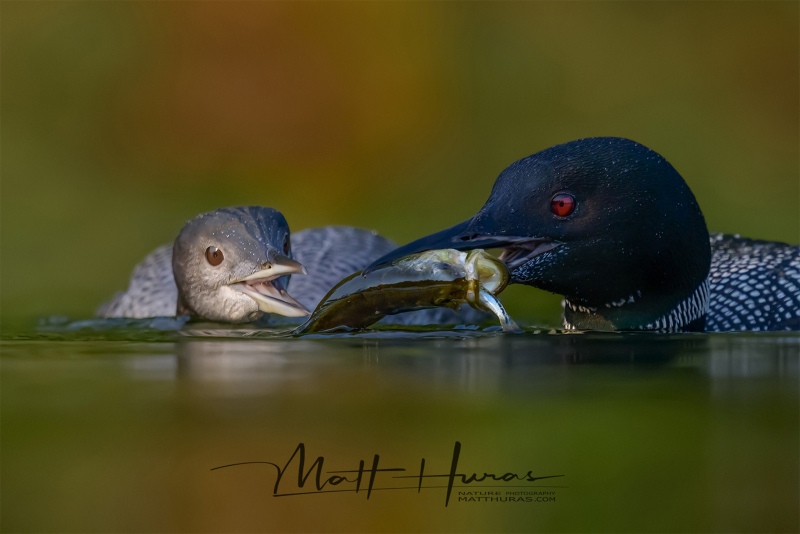February 24th, 2023 Your Call
All are invited to leave a comment stating their preference for each of today’s four featured images. Please put them in order with your favorite image first and your least favorite of the four. Ambitious folks can comment on why they made their choices. I will share my list and my reasons with you here tomorrow.
What’s Up?
Thursday was the least fantastic day of the first Homer/Kachemak Bay IPT. That said, the day was filled with great photo chances and provided countless opportunities for folks to learn. And learn they did. Carolyn created her first a1 videos of flying eagles. Vasili, Carolyn, and Bob Eastman all worked on creating pleasing blurs at the end of the day. And Bear Bob learned that he should have listened to me and brought his Canon 70-200mm f/2.8 lens on the trip. In low light conditions, that lens shines no matter what system you are using. Except for Robert Sabine who left his home, it has been everyone’s most valuable lens by far.
In yesterday’s blog post, my favorites, in order, were 2, 3, and 1. Image #2 was pretty much perfect but it would have been nice to have had the second talon dropped down (as Adam suggested). I loved the three amigo eagles for its sharpness, the image design, and the single calling bird. #1 was OK but I plan on trying for something similar but more dynamic.
Today is Friday 24 February 2023. I just heard from Captain Gabe who called off sailing today because of small craft warnings with five to eight foot seas in the forecast. We have lots of image review and Photoshop to catch up on and we did get in 19 3/4 of our allotted 20 hours on the boat.
This blog post took about two hours to prepare (including the time spent on the image optimizations) and makes three hundred thirty-one days in a row with a new educational post written just for you. Wherever you are and whatever you are doing, I hope that you too have a great day.
Please, please, pretty please remember to use my B&H or Bedford’s affiliate programs for all your new gear purchases. If you use B&H, please be sure to click on any B&H link in the blog to start your search. Or simply start with this link. There is always the option of e-mailing me for gear advice and for the correct links.
The plan is to continue to post every day until the streak reaches one year and one day and then begin posting every other day.
Please remember to use the B&H and Amazon links that are found on most blog pages and to use the BIRDSASART discount code at checkout when purchasing your new gear from Bedfords to get 3% back on your credit card and enjoy free second-day air FedEx. Please, also, consider joining a BAA IPT. You will be amazed at how much you will learn!
You can find some great photo accessories (and necessities, like surf booties!) on Amazon by clicking on the Stuff tab on the orange/yellow menu bar above. On a related note, it would be extremely helpful if blog-folks who, like me, spend too much money on Amazon, would get in the habit of clicking on the Amazon logo link on the right side of each blog post when they shop online. As you might expect, doing so will not cost you a single penny, but would be appreciated tremendously by yours truly. And doing so, works seamlessly with your Amazon Prime account.
Please remember that if an item — a Delkin flash card, or a tripod head — for example, that is available from B&H and/or Bedfords, is also available in the BAA Online Store, it would be great, and greatly appreciated, if you would opt to purchase from us. We will match any price. Please remember also to use my B&H affiliate links or to earn 3% cash back at Bedfords by using the BIRDSASART discount code at checkout for your major gear purchases. Doing either often earns you free guides and/or discounts. And always earns my great appreciation.
|
|
|
This image was created on 23 February 2023 on Day Four of the first Homer Bald Eagle IPT at Kachemak Bay, AK. I used the hand held Sony FE 70-200mm f/2.8 GM OSS II lens (at 200mm) and The One, the Sony Alpha 1 Mirrorless Digital Camera.. The exposure was determined via Zebras with Exposure Compensation on the thumb dial. ISO 1250: 1/250 sec. at f/8 (stopped down four stops) in Manual mode. AWB at 11:25:08 am on a dark, dingy morning.
Tracking: Spot S AF/C performed perfectly. Click on the image to enjoy a high-res version.
Image #1: Crab shell on snow
|
The Sony 70-200 f/2.8II GM as a Quasi-Macro Lens
After trying and failing to get some eagles to land on moose antlers, several of us looked along the wrack line for something to photograph. We did some shell and seaweed close-ups. We shot some stuff in situ, and we placed some stuff like this crab shell on an area of unblemished snow. Most of the 70-200 f/2.8 lenses have a decent close focus. The Sony version II has an outstanding Minimum Focusing Distance (MFD) of 15.7 inches. I think that that is at 70mm and is increased a bit as you go to longer focal lengths. IAC, you are able to get right over a subject and shoot straight down.
Why f/8?
|
|
|
This image was also created on 23 February 2023 on Day Four of the first Homer Bald Eagle IPT at Kachemak Bay, AK. Again, I used the hand held Sony FE 70-200mm f/2.8 GM OSS II lens (at 200mm) and The One, the Sony Alpha 1 Mirrorless Digital Camera.. The exposure was determined via Zebras with Exposure Compensation on the thumb dial. ISO 1600: 1/2500 sec. at f/2.8 (wide-open) in Manual mode. AWB at 4:00:50pm on a very dark, dingy morning.
Tracking: Zone AF/C performed perfectly. Click on the image to enjoy a high-res version.
Image #2: Bald Eagle adult beginning dive
|
The Sony 70-200 f/2.8II GM as a Super-fast Low Light Flight and Action Lens
The weather in Alaska is always variable. Yesterday was on the dark side with a few sprinkles of rain here and there. With the birds at close range, the bare (i.e., no TC) 70-200 II is the ticket to success, allowing for the use of high shutter speeds and relatively low ISO settings. On brighter days, the addition of the 1.4X TC gives you more reach when needed. Not to mention that the lens is relatively tiny and light allowing pretty much everyone to be able to handhold it for long flight photography sessions.
|
|
|
This image was also created on 23 February 2023 on Day Four of the first Homer Bald Eagle IPT at Kachemak Bay, AK. I used the hand held Sony FE 70-200mm f/2.8 GM OSS II lens with the Sony FE 1.4x Teleconverter (at 185mm) and The One, the Sony Alpha 1 Mirrorless Digital Camera.. The exposure was determined via Zebras. ISO 160: 1/30 sec. at f/4 (wide-open) in Manual mode. AWB at 7:52:16am on a dark, dingy morning.
Tracking: Spot Zone AF/C with Bird-Eye/Face Detection performed perfectly. Click on the image to enjoy a high-res version.
Image #3: Bald Eagle striking blur
|
The Sony 70-200 f/2.8II GM as a Blur Lens
Most any intermediate telephoto lens would work well for blurs. The beauty of the 70-200 is that it is light and the zoom is smooth and fast. With the 1.4X in place here I had the extra reach when I needed it. And AF with the Sony version II is vastly improved over the original model.
|
|
|
This image was also created on 23 February 2023 on Day Four of the first Homer Bald Eagle IPT at Kachemak Bay, AK. I used the hand held Sony FE 70-200mm f/2.8 GM OSS II lens (at 200mm) and The One, the Sony Alpha 1 Mirrorless Digital Camera.. The exposure was determined via Zebras with Exposure Compensation on the thumb dial. ISO 320: 1/160sec. at f/4 (stopped down one stop) in Manual mode. AWB at 5:22:54pm on a cloudy afternoon.
Tracking: Expand Spot AF/C performed just fine. Click on the image to enjoy a high-res version.
Image #4: Snow-covered mountain-side with fog bank
|
The Sony 70-200 f/2.8II GM as a Landscape Lens
No matter the manufacturer, the 70-200 lenses are favored by many professionals and talented amateurs for scenic and landscape photography. The raw file for this image was blah, blah, blah. The raw conversion helped and I used Viveza from the NIK Collection to add texture to the white sky and to brighten and color up the row of trees (both alive and dead).
Summing Up
The 70-200mm lenses are extremely versatile. I could have added 100 very different images to this post, all made on the first Homer IPT.
Typos
With all blog posts, feel free to e-mail or to leave a comment regarding any typos or errors.
February 23rd, 2023 Your Call
All are invited to leave a comment stating their preference for each of today’s three featured images. Please put them in order with your favorite image first and your least favorite of the three last. Ambitious folks can comment on why they made their choices. I will share my list and my reasons with you here tomorrow.
What’s Up?
The first Homer/Kachemak Bay IPT continues to be incredibly successful beyond-belief. My blog buddy and room-mate Bob Eastman created 5980 images including at least a few spectacular ones. Using the most valuable rig on the trip, a Sony 70-200mm II with the 1.4X TC on an a1, he created a killer image of a young Bald Eagle picking up a dead Black Scoter. Bob is nailing his exposures and his flight photography keeps improving at each session. Seventy-nine year-old Carolyn Johnson continues to amaze everyone with her spirit and her youthfulness; she has no problem handholding the Sony 200-600! Robert (“Bear Bob”) Sabin is still quietly killing with his Canon R5/RF 100-500 rig. Vasili (“The Sponge”/AKA “Machine Gun Kelly”) “) Chernishof has created an astounding 40770 1DX III images after only five shooting sessions!
In yesterday’s blog post, seven of Matthew Huras’s images were tied for first place. In my book, the spectacular bittern in flight is alone in second place. Yes, the Bufflehead in flight was amazing as noted by many. The soft light, the colors, and the action in the mating Kestrels are all nothing short of perfection. In the loon swallowing large fish vertical, I loved the pattern of the spray and the wake behind the bird’s neck as much as the fish. The pink sky in the SEO image is something we can all only dream of. The image design of the Northern Pygmy Owl image that showed off the tiny size of the bird so well is brilliant. The flapping baby grebe shot was simply too cute and too beautiful. If you held a gun to my head, I would have had to pick Image #8 as my very favorite because of the low angle and the fact that one fish was eating another fish. Are you kidding me? Anyhoo, thanks again to Matt for allowing me to share his work with you.
Today is Thursday 23 February 2023. There is midday drizzle in the forecast, so we will do two sessions today, one early and one in the afternoon. This blog post took about two hours to prepare (including the time spent on the image optimizations) and makes three hundred thirty days in a row with a new educational post written just for you. Wherever you are and whatever you are doing, I hope that you too have a great day.
Please, please, pretty please remember to use my B&H or Bedford’s affiliate programs for all your new gear purchases. If you use B&H, please be sure to click on any B&H link in the blog to start your search. Or simply start with this link. There is always the option of e-mailing me for gear advice and for the correct links.
The plan is to continue to post every day until the streak reaches one year and one day and then begin posting every other day.
Please remember to use the B&H and Amazon links that are found on most blog pages and to use the BIRDSASART discount code at checkout when purchasing your new gear from Bedfords to get 3% back on your credit card and enjoy free second-day air FedEx. Please, also, consider joining a BAA IPT. You will be amazed at how much you will learn!
You can find some great photo accessories (and necessities, like surf booties!) on Amazon by clicking on the Stuff tab on the orange/yellow menu bar above. On a related note, it would be extremely helpful if blog-folks who, like me, spend too much money on Amazon, would get in the habit of clicking on the Amazon logo link on the right side of each blog post when they shop online. As you might expect, doing so will not cost you a single penny, but would be appreciated tremendously by yours truly. And doing so, works seamlessly with your Amazon Prime account.
Please remember that if an item — a Delkin flash card, or a tripod head — for example, that is available from B&H and/or Bedfords, is also available in the BAA Online Store, it would be great, and greatly appreciated, if you would opt to purchase from us. We will match any price. Please remember also to use my B&H affiliate links or to earn 3% cash back at Bedfords by using the BIRDSASART discount code at checkout for your major gear purchases. Doing either often earns you free guides and/or discounts. And always earns my great appreciation.
B&H
Many folks have written recently stating that they purchased a Sony a1 from B&H and would like their free membership in the Sony 1 Info and Updates Group, a $150.00 value. When I check my affiliate account, their orders have not been there. When I let them know that they get credit for B&H purchases only if they use one of the many B&H affiliate links on the blog or begin their searches with this link, they are always disappointed. If in doubt, please contact me via e-mail and request a BH link. I am always glad to help and to guide you to the right gear.
Induro GIT 304L Tripod
Price reduced $50.00 on 16 FEB 2023
Out of production for more than two years, BAA sold its last one in December. The good news? We have two more new-in-the-box tripods. They are now available for only $649.00 (were $699.00). The 304L was my go-to tripod for more than a decade. Best to grab order yours right now by clicking here to avoid being disappointed.
Bedfords Amazing BAA Discount Policy
Folks who have fallen in love with Bedfords can now use the BIRDSASART coupon code at checkout to enjoy a post-purchase, 3% off-statement credit (excluding taxes and shipping charges) on orders paid with a credit card. The 3% credit will be refunded to the card you used for your purchase. Be sure, also, to check the box for free shipping to enjoy free Second Day Air Fed-Ex. This offer does not apply to purchases of Classes, Gift Cards, prior purchases.
Visit the Bedfords website here, shoot Steve Elkins an e-mail, or text him on his cell phone at (479) 381-2592.
Money Saving Reminder
Many have learned that if you need a hot photo item that is out of stock at B&H and would like to enjoy getting 3% back on your credit card along with free 2nd Day Air Fed-Ex Air shipping, your best bet is to click here, place an order with Bedfords, and enter the coupon code BIRDSASART at checkout. If an item is out of stock, contact Steve Elkins via e-mail or on his cell phone at (479) 381-2592 (Central time). Be sure to mention the BIRDSASART coupon code and check the box for Free Shipping. That will automatically upgrade to free 2nd Day Air Fed-Ex. Steve has been great at getting folks the hot items that are out of stock at B&H and everywhere else. The waitlists at the big stores can be a year or longer for the hard-to-get items. Steve will surely get you your gear long before that. For the past year, he has been helping BAA Blog folks get their hands on items like the SONY a 1, the SONY 200-600 G OSS lens, the Canon EOS R5, the Canon RF 100-500mm lens, and the Nikon 500mm PF. Steve is personable, helpful, and eager to please.
Important Note
As an Amazon Associate, I earn a small percentage when you purchase from Amazon after using any of the Amazon links on the blog (including the logo-link on the right side of each blog post page). My affiliate link works fine with Amazon Prime and using it will not cost you a single cent. Huge thanks, BTW 🙂


Gear Questions and Advice
Too many folks attending BAA IPTs and dozens of photographers whom I see in the field and on BPN, are — out of ignorance — using the wrong gear, especially when it comes to tripods and more especially, tripod heads. And the same is true in spades when ordering new camera bodies or lenses. My advice will often save you some serious money and may help you avoid making a seriously bad choice. Please know that I am always glad to answer your gear questions via e-mail. If you are desperate, you can try me on my cell at 863-221-2372. Please leave a message and shoot me a text if I do not pick up.
|
|
|
This image was created on 21 February 2023 on the second afternoon of the first Homer IPT. Sitting on the snow after we landed at McKeon Spit, I used the handheld Sony FE 400mm f/2.8 GM OSS lens and The One, the Sony Alpha 1 Mirrorless Digital Camera). The exposure was determined via Zebra technology with ISO on the Thumb Dial. ISO 800. 1/3200 sec. at f/2.8 (wide-open) in Manual mode. When evaluated in RawDigger, the raw file brightness was determined to be about 1/2 stop under. AWB at 3:25:32pm on variably cloudy afternoon.
Tracking: Expand Spot/AF-C with Bird Face/Eye detection enabled performed to perfection. Be sure to click on the image to enjoy a high-res version.
Image #1: Bald Eagle about to strike, talons extended
|
Learning About the Wind
With the nonstop flight photography, the Homer IPT offers a virtual nonstop education on the effect of the wind on flying birds. With the wind foremost in my mind, I sat the group on the edge of China Poot Bay with the wind behind us to try for images of the birds striking directly at us. In the morning, we were faced with the dreaded wind-against sun conditions, so I taught the group to study the patterns of the birds in flight and learn to anticipate them banking. The eagles offer a variety of dramatic flight poses as they turn and begin to dive.
|
|
|
This image was created on 21 February 2023 on the second afternoon of the first Homer IPT. Standing at full height after we landed at McKeon Spit, Kachemak Bay, I again used the handheld Sony FE 400mm f/2.8 GM OSS lens and The One, the Sony Alpha 1 Mirrorless Digital Camera). The exposure was determined via Zebra technology with ISO on the Thumb Dial. ISO 2000. 1/2500 sec. at f/4 (a mistake!) (stopped down 1-stop) in Manual mode. When evaluated in RawDigger, the raw file brightness was determined to be dead-solid perfect. AWB at 3:25:32pm on variably cloudy afternoon.
Tracking: Expand Spot/AF-C with Bird Face/Eye detection enabled performed to perfection. Be sure to click on the image to enjoy a high-res version.
Image #2: Adult Bald Eagle braking to land
|
A Big Mistake
Study the EXIF and leave a comment letting me know what error I made when setting the aperture. Does anything about this image bug you?
|
|
|
This image was created on 22 February 2023, the third afternoon of the first Homer IPT. While standing on the boat at Franklin Flats, Kachemak Bay, I used the handheld Sony FE 400mm f/2.8 GM OSS lens
the Sony FE 1.4x Teleconverter (at 560mm), and The One, the Sony Alpha 1 Mirrorless Digital Camera). The exposure was determined via Zebra technology with ISO on the Thumb Dial. ISO 1000. 1/800 sec. at f/4 (wide open) in Manual mode. When evaluated in RawDigger, the raw file exposure was determined to be dead-solid perfect. AWB at 4:14:34pm on a cloudy afternoon.
Tracking: Expand Spot/AF-C with Bird Face/Eye detection enabled performed to perfection. Be sure to click on the image to enjoy a high-res version.
Image #3: The Three Amigos — adult Bald Eagles on snag, one calling
|
Our Captain
When advertising the Kachemak Bay IPTs, I state that the captain of the boat that I use is the best in Homer. He continues to prove that every session. On Thursday afternoon, he took us into Franklin Flats, a spot I had never been to in 20 years of visiting Homer. It was a calm lagoon with a large stand of gorgeous dead tree skeletons on the spit. Likewise, on the landmark side of the bay, there were lots of dead snags, most of them adorned with from one to eight eagles. His knowledge of the tides and the locations is unequalled. He knew that we needed an incoming heading for high tide to visit this gorgeous and productive spot. Everyone loved it!
The Sony 400mm f/2.8 GM Lens
Boy, am I glad that I purchased the Sony 400mm f/2.8 GM lens last May. After trashing the lens for bird photography, I have come to love it for its handhold-ability and its super-wide f/2.8 aperture. I have been equally thrilled with my decision to bring the 400 and leave the 600mm f/4 GM lens at home. With image #3, I added the 1.4X TC to provide extra reach.
Typos
With all blog posts, feel free to e-mail or to leave a comment regarding any typos or errors.
February 22nd, 2023 An Impossible Task?
All are invited to leave a comment as to which of Matt Huras’s eight featured images is the strongest. Be sure to let us know why. If you cannot control yourself, it is OK to go with two or three photos. But be warned, this will be a very difficult job,
What’s Up?
All four participants of the first Homer/Kachmak Bay IPT agreed that the morning session on Day Two was the best three hours of bird photography they had ever experienced. That was true, until our afternoon session! Oh, what a day. My blog buddy and room-mate Bob Eastman created more the six thousand images. Carolyn Johnson is having the time of her life while keeping more than 300 images from each session. Robert (“Bear Bob”) Sabin is killing with his Canon R5/RF 100-500 rig. And Vasili (“The Sponge”) Chernishof continues to ask on-point questions all day long. And yesterday, he laid off the shutter button once the bird had flow past him — a huge improvement.
In the afternoon, I inadvertently left my Sony 70-200mm f/2.8 GM II lens on my bed and in the low light, was forced to do flight photography with the big gun, the 400mm f/2.8 GM. Oh my!
In yesterday’s blog post, I was the only one who liked Image #5, Bald Eagle adult female with dried blood on forehead best. Why? Because she was looking right down the lens barrel and because of the dried blood on her forehead. In short, it was different. Most folks opted for Image #2, the vertical bank shot. I liked that one also (along with the rest of the images), but I have made many like tike that before.
Today is Wednesday 22 February 2023. As it will be our first cloudy morning (and day), we will leave the dock at 10:00am.
If you have some cold weather gear, are free from about 23 or 24 February through March 3 or 4 or beyond — there is still a single opening on the third IPT, and would like to join the second Homer IPT, please get in touch via e-mail ASAP as I am practically giving that one away for free.
This blog post took about two hours to prepare and makes three hundred twenty-nine days in a row with a new educational post written just for you. Wherever you are and whatever you are doing, I hope that you too have a great day.
Please, please, pretty please remember to use my B&H or Bedford’s affiliate programs for all your new gear purchases. If you use B&H, please be sure to click on any B&H link in the blog to start your search. Or simply start with this link. There is always the option of e-mailing me for gear advice and for the correct links.
The plan is to continue to post every day until the streak reaches one year and one day and then begin posting every other day.
Please remember to use the B&H and Amazon links that are found on most blog pages and to use the BIRDSASART discount code at checkout when purchasing your new gear from Bedfords to get 3% back on your credit card and enjoy free second-day air FedEx. Please, also, consider joining a BAA IPT. You will be amazed at how much you will learn!
You can find some great photo accessories (and necessities, like surf booties!) on Amazon by clicking on the Stuff tab on the orange/yellow menu bar above. On a related note, it would be extremely helpful if blog-folks who, like me, spend too much money on Amazon, would get in the habit of clicking on the Amazon logo link on the right side of each blog post when they shop online. As you might expect, doing so will not cost you a single penny, but would be appreciated tremendously by yours truly. And doing so, works seamlessly with your Amazon Prime account.
Please remember that if an item — a Delkin flash card, or a tripod head — for example, that is available from B&H and/or Bedfords, is also available in the BAA Online Store, it would be great, and greatly appreciated, if you would opt to purchase from us. We will match any price. Please remember also to use my B&H affiliate links or to earn 3% cash back at Bedfords by using the BIRDSASART discount code at checkout for your major gear purchases. Doing either often earns you free guides and/or discounts. And always earns my great appreciation.
|
|
|
This image was created by Matt Huras. He used the Nikon AF-S NIKKOR 600mm f/4G ED VR lens with the Nikon D850 DSLR.
Be sure to click on the image to enjoy a high-res version.
Image #1: Copulating American Kestrels
Image courtesy of and copyright Matt Huras Nature Photography
|
Discovering the Work of Matt Huras
I was surfing around on the web, looking for some great bird photography. While visiting Matthew Studebaker’s website, I discovered another Matthew who likes to photograph birds and nature Matt Huras. I followed the link; it turned out to be broken. But it led me to MATTHURAS.COM. I was totally blown away. I spent an hour looking at every page and gallery. What I saw was extraordinary. I e-mailed Matt and asked him if I might share some of his work on the blog. And so, here we are. Enjoy, and learn.
And yes, the male, the bird with the blue wings, is on top.
Matt on the American Kestrels mating image
Two American Kestrels doing the deed early one spring morning. Though it lasted no more that 5 seconds, the look from the female seems to ask, “When will this be over?”
The Very Best Way to Improve Your Bird Photography
The very best way to improve your bird photography is to look at and study as much great bird photography as possible. I do that often. Study each image and ask, “What makes this one special?” You will always learn something, and will often be motivated and inspired. But when you find someone as talented and hard-working as Matt, you just might — as I did — want to throw all of your gear in the lake and take up knitting.
As I viewed Matt’s images for the first time, I tried to figure out what gear he was using. Many of the images screamed 600mm f/4. Others brought a 400mm f/2.8 to mind. As for Matt’s system, I figured Sony A1 or Nikon Z9. As it turned out, I was right on all counts!
Please click on the image to view the high-res version.
Matt on the Screaming-in-for-a-landing male Bufflehead image
You gotta love how mother nature taught these ducks to use their legs when landing. They initially hold their feet splayed behind them (like parachutes) to help them slow down as seen in this image. Then at the last second, they quickly move their legs forward to act as water skis as they skid in for a landing.
Matt Huras Bio
Matt spent 30+ years in the IT industry before retiring with a thirst to spend more time out of the office and in nature. So he grabbed the old camera gear that he had used to photograph his kids when they were young and headed out into the woods. One of the first things he came across was a tiny black and yellow bird. He thought it looked kinda cool, so he snapped some frames. After a close look on my PC screen that evening, he was struck by how beautiful the little critter was and wondered, “What is this thing? Why haven’t I seen it before?”
After a little googling, he learned it was a Magnolia Warbler. He was completely enamored by its beauty and by the fantastical world of the wood warbler family. From that point on, he was a man on steroids. Frustrated at having discovered this world relatively late in my life, he wanted to make up for that lost time by cramming as much learning and photography as he could into his remaining time. He has done that in spades!
And as he spent more and more time in nature, the more wondrous it became to him. And he realized that he needed to share what he was so privileged at seeing and witnessing with others. He thought, “So many people – busy with the complexity of their lives – struggle to experience the beauty of our world.” He hoped, through photography, to capture and share unique perspectives of our world that may help others feel the wonder he feels when out in the wild.
Check out more of Matt’s photography on the web at MATTHURAS.COM, on Instagram at matthuras, or on Facebook at matt.huras.7
Matt on the Short-eared Owl image
Crazy-extreme cold and a pink pre-dawn glow created some special conditions for photography one winter morning in Canada last year. This Short-eared Owl cooperated nicely by posing on a frost-laden tree top.
Matt on the Northern Pygmy Owl image
When this Northern Pygmy Owl perched on this small Juniper bush, I wanted to include a fair amount of the foliage in the frame to show just how tiny these beautiful owls are.
Matt on the American Bittern taking flight image
I was trying to locate a Great-crested Flycatcher that had been calling when I heard the unmistakable “lump-de-dump” sound of an American Bittern in the nearby swamp. Not long later, I was delighted to not only see the bird, but see it take to the air! I usually try to keep my shutter speed high to capture action, and that came in handy here.
Matt on the Red-necked Grebe baby flapping image
One thing I have learned shooting young water birds is that they will often emulate their parents. So when a parent flaps their wings, instead of cursing myself that for missing the shot, I instead focused on a baby, hoping that it would soon follow suit.
Matt on the Common Loon with large fish image
This Common Loon struggled with its catch for at least 15 minutes. In the end, it was unable to swallow the fish and left it floating, dead in the water. It was a sad outcome for the loon (and of course, for the fish!), but perhaps it was scooped up by a passing Bald Eagle. Nothing goes to waste in nature.
Matt on the Common Loon chick being fed bass eating baitfish! image
It’s a dog-eat-dog world out there! The adolescent loonlet is getting a double bonus meal. Yes, it’s about to get a nice sized bass. But it’s also getting the little fish that the big fish was just about to swallow when it was caught by momma loon. Dessert served at the same time as the main course! I did not notice the baitfish while shooting – my eyes popped later when reviewing the images.
Huge Thanks
Huge thanks to Matt Huras for allowing me to share just some of his spectacular work with y’all here on the blog. He was both helpful and quick to respond to my various requests. I hope to meet him somewhere along the road at some point.
Typos
With all blog posts, feel free to e-mail or to leave a comment regarding any typos or errors.
|
|

